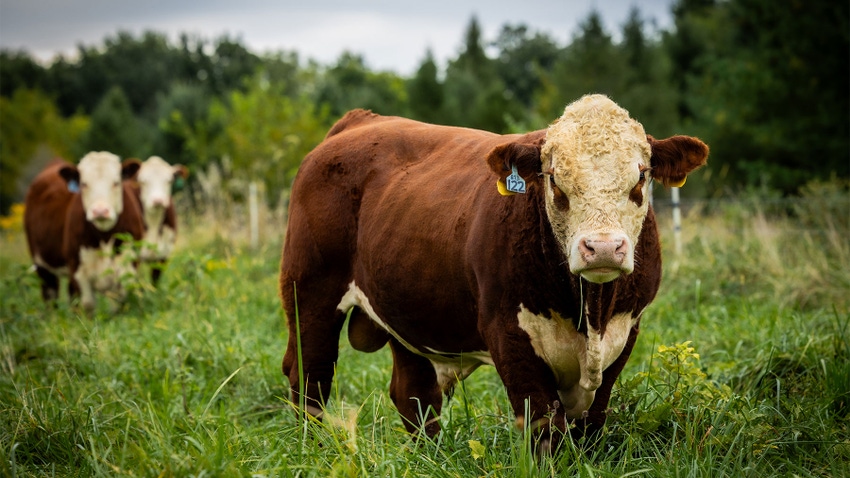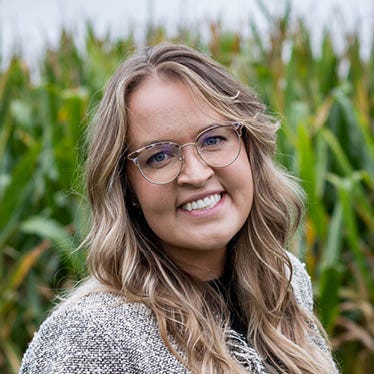Make use of precision technologies in cattle genetics
Successful breeding and genetic decisions mean dollars gained or lost for cattle producers. Darrh Bullock of the University of Kentucky says to consider how every genetic trait influences your bottom line.
August 9, 2023

Precision agriculture may be taking the crop industry by storm, but precision technologies can also benefit cattle genetics.
Darrh Bullock, beef cattle genetics professor at the University of Kentucky, says your farm or ranch’s end goals should be your first step in considering precision technologies. Next, consider breeding objectives.
“Breeding objectives are specific, genetically influenced objectives to help you reach those farm or ranch goals,” Bullock says.
Breeding objectives should have a positive impact on quality of life via economic benefit, working well-being, convenience and social benefits.
“When we start thinking about those breeding objectives, we need to think about our potential markets, management and environmental factors,” Bullock says. “The beauty of crossbreeding is that hybrid vigor or heterosis in offspring performs better than the average of the parents.”
Bullock says the two primary genetic tools available are crossbreeding and selection.
In certain parts of the country, commercial operation managers have abandoned crossbreeding. When considering breeding selection and crossbreeding, environmental factors like temperature or geography should be front of mind.
“We focus so much on crossbreeding because of reproduction and productivity,” Bullock says. “Improving reproduction and keeping cows productive longer in your herd is a huge financial benefit for most commercial operations.”
Influencing genetic change
For genetic selection, Bullock says to consider genetic change, targeted traits and multiple-trait selection.
“There are different ways to make genetic change,” he says. “We always think about it as just buying the better bull.”
Genetic change is influenced by four factors:
Intensity of selection. This refers to how quickly a trait moves to the top percentile of the breed or herd. Achieve a higher intensity selection by purchasing bulls in the top percentile of a breed, retaining heifers with superior expected progeny differences (EPDs) and replacing inferior cows.
Accuracy of selection. This refers to correctness of the trait. Data or phenotypic records influence this, and seedstock producers can achieve it through improved pedigree and contemporary grouping strategies.
Additive genetic variance. This is dependent on specific traits and cannot be controlled by a breeder.
Generation interval. This refers to the amount of time required to replace one generation with the next. Both the culling rate and selection intensity of the herd impact the generation interval.
Bullock admits that as producers chase fads, sometimes they lose sight of their farm or ranch goals.
“There is no sin in staying where you are if your herd is where you need them to be,” he explains. “If you’re at the production level that’s right for your operation, then why do you keep chasing stuff?”
When considering which traits to select for, consider marketing options, management, environment, economics and available tools.
Marketing considerations are tied to when cattle are sold — such as at weaning, as yearlings, on the rail or as replacement heifers.
Management and environmental considerations include breed choice for different climates, calving ease when breeding heifers, maternal traits when retaining heifers, calving ease if ranch labor is sparse and production considerations if access to feed is a challenge.
“If your cows have a calf and they’re trying to milk but you don’t have good nutrition for them, the first thing they give up is reproduction,” Bullock says. “I highly encourage you to think about what kind of environment you’re putting females in before you bid on that Lot 1 bull.”
Economically relevant traits are specific to each farm or ranch operation. Bullock says to consider if the trait is a revenue stream or if it has a direct cost. Examples include EPDs related to calving ease, weaning weight, milking ability, feed efficiency, carcass, fertility traits or maintenance traits.
Trait selection and economics
“We can never think about a single trait,” Bullock says. “We have to use multiple-trait selection.”
Multiple-trait selection can be done by selecting for one trait and then the next, setting individual culling criteria for each trait or by using selection indexes. According to Bob Weaber of Kansas State University, “Selection indexes simplify selection by weighting EPDs by appropriate economic values to estimate the net merit of a selection candidate under a predefined breeding objective or goal.”
Bullock says even the most careful selection index is subject to human error, or preference.
“By the time you get to the end, you’ve justified your selection decision, but you probably haven’t done a very good job,” he explains. “What you’ve probably done is taken that bull that looked good and found a way to make him fit your index. We need to be careful of that. What we hope you can do is try and base it more on an economic index.”
.
Traditional economic selection is done by looking at all traits as linear. Or in other words, as the EPD increases, so does the economic impact. Economic selection can also be nonlinear, as some traits reach a threshold and then their value begins to decrease.
“Up to a certain point, we’re getting increased value out of milk production,” Bullock says. “And then once we’ve hit our resource limitations, we start to get decreasing value to increased milk.”
Bullock’s take-home message is to implement practices to improve production and profitability.
“If you’re in the commercial industry, refocus on crossbreeding, develop a plan and stick to it,” he explains.
“Think about every trait and consider whether or not it puts money in your pocket. If not, then don't put it in your selection equation.”
About the Author(s)
You May Also Like




.png?width=300&auto=webp&quality=80&disable=upscale)
